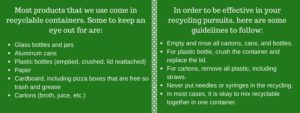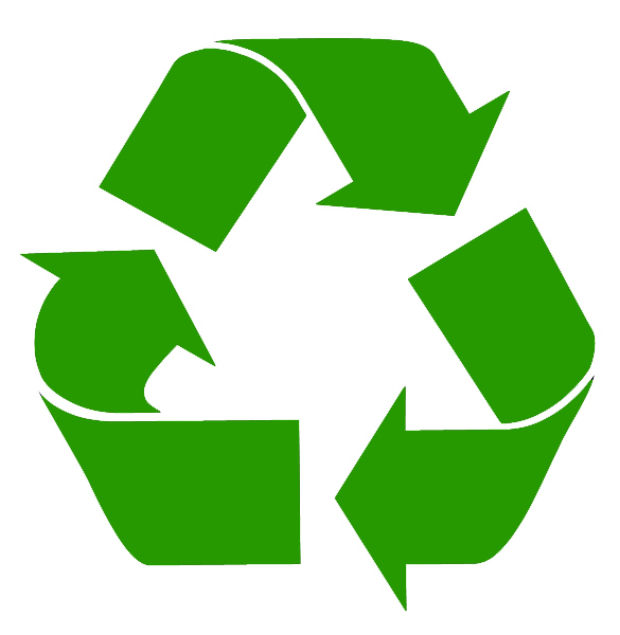Did you know that for every ton of recycled paper, 17 trees are saved from being chopped down? That’s a lot of oxygen, considering that a single, mature tree gives off enough of it to sustain the life of two human beings.
Aside from saving the trees, regularly recycling paper conserves about 380 gallons of oil, 3 cubic yards of landfill space, 4,000 kilowatts of energy, and 7,000 gallons of water, according to usi.edu.
Similarly, one acre of trees annually absorbs an amount of carbon dioxide equivalent to what is produced by driving a car for 26,000 miles, and is then able to produce enough oxygen to support 18 people.
When paper is not recycled, 80 percent of it ends up in landfills. As it decomposes there, it releases methane – a greenhouse gas with 21 times the heat-trapping power of carbon dioxide – into the air. The United States Environmental Protection Agency identifies landfills as the largest source of methane gas emissions, with decomposed paper creating the most.
This information comes from paperrecyclingcoalition.com, an organization whose goal is to spread awareness of the imminent danger that our environment is in, while offering valuable information on how to reduce our individual carbon footprints.
According to epa.gov, since the mid-20th century, greenhouse gas released as a result of human activity has remained the most significant driver of observed climate change. The release of these gases is incredibly harmful to the environment as a whole, but statistically, the amount of gases expelled varies from country to country.
In the United States, electricity generation is the largest source of greenhouse gas emissions, followed closely by transportation. Since 2005, emissions have decreased by 7 percent; however, emissions worldwide due to human activity increased by 35 percent from 1990 to 2010.
The majority of emissions come from Asia, Europe and the United States. In 2012, these three regions together totaled 88 percent of total, global gas emissions.
As mentioned before, human activity has the most pull when it comes to the amount of greenhouse gases emitted into the atmosphere. The scientifically determined number regarding global, environmentally sustainable life is 2.5 to 3 billion; the current population is over 7 billion, according to quora.com. Due to this incredibly high differential, it is imperative that humans do everything they can to help combat the effects of overpopulation.
Capital recently implemented a new recycling program that brought 144 new recycling bins to campus, courtesy of a company called EAL in Fresno, Ohio. This initiative makes it easier for students, staff and faculty to recycle while on campus, but there is more that can be done.
If possible, avoid using disposable coffee cups. They may appear be made only of paper on the outside, but they are lined with an unrecyclable plastic that helps with insulation. Since these cups are not recyclable, they often end up in landfills or – perhaps worse – in the oceans.
Reusable coffee cups are purchasable almost everywhere, from Starbucks to Kroger to Giant Eagle to Bexley’s own local shop Urban Emporium. Purchasing a traveler mug not only helps to decrease each individual’s carbon footprint, but also can help save money by prompting the owner to make coffee at home.
Note-taking is imperative to having a successful college career, but it uses up a lot of paper. Statistically, it’s been proven that hand-writing notes helps with retention; if you stand by that statistic, consider recycling your notes at the end of the term, or give them to a friend who may be taking the same class you just completed.
It’s entirely possible, however, to take notes electronically and avoid the use of paper all together.
Professors can help decrease paper usage by taking advantage of iLearn accessibility and posting assignments, notes and other documents electronically. Similarly, allowing students to submit final, lengthy papers via email reduces paper usage as well.
Another way to help the environment is to limit the use of plastic, be it bags, Ziploc containers, or water bottles. Plastic takes the most energy to break down, and oftentimes is not properly disposed of, causing it to become unrecyclable.
When recycling plastic items, it is important to check with your local waste management service to see what they will and will not pick up at the curb. A commonly mal-recycled item is the plastic grocery bag. While technically recyclable, they get caught in the machinery that is used by recycling companies, which costs the company more money, wastes energy and causes more greenhouse gases to be emitted.
To combat this, use nylon or another washable material bags to do grocery shopping, and avoid getting a plastic bag for small purchases. Many grocery chains offer recycling for plastic bags, ensuring that they are properly disposed of and not a threat to the recycling process.
We only get one planet, and since the main reason for its deterioration is human activity, it’s important to make changes to help preserve it for as long as possible. There are dozens of websites with resources for those interested in learning more about what recycling means for the longevity of our environment, and how it can combat global warming.


